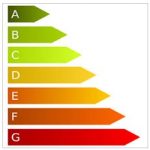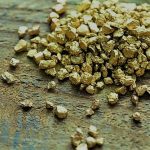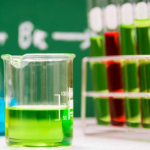We use cookies to personalize content and advertisements, to offer social media functions and to analyze access to our website.
You can revoke the given consent at any time. You can find further information in our Privacy Policy.
May 2017
On 12, May 2017 | In Events | By Alisa Maier
This year´s Battery Power – an international conference highlighting the latest developments impacting batteries and power management in portable devices – will take place May 17 – 18, 2017 in Dallas/Texas.
Ofira Varga, Senior Consultant, 1WEEE Services Corp. a subsidiary of 1cc GmbH, will give the presentation “Battery Take Back and Recycling Obligations” on May 18, 2017 at 13:00h local time.
As the number of global environmental legislations covering electronic and electrical products, batteries and packaging increases annually, it is becoming more and more challenging for companies to maintain compliance for product/battery sales in markets around the world.
The presentation will focus on battery take back and recycling legislations and will highlight which parts of the world have already implemented / are in the process of implementing recycling regulations for batteries. In addition, the presentation will provide examples for different approaches as the batteries covered under the legislation or the definition of the obligated party in different regions.
Further information: www.batterypoweronline.com/conferences
Apr 2017
On 21, Apr 2017 | In News @en | By Alisa Maier
 The European Parliament and the Council agreed recently on a revised energy label within the EU Energy Labelling Directive 2010/30/EU. The current A+++ to G labels for energy-related products will be replaced by a scale from A to G.
The European Parliament and the Council agreed recently on a revised energy label within the EU Energy Labelling Directive 2010/30/EU. The current A+++ to G labels for energy-related products will be replaced by a scale from A to G.
With the revised label, consumer shall be able to make their purchase decision easier as the distinction between the different classes is clearer to perceive. Products showing the revised label are expected to be available in shops at the earliest at the end of 2019.
Any future rescaling should be triggered when 30% of products sold on the EU market fall into the top energy efficiency class A, or when 50% of these products fall into the top two energy efficiency classes A and B.
Furthermore, the revised Energy Labelling Directive will introduce a product registration database to support market surveillance activities by the Member States. The database will provide a public area containing all energy efficiency labels, which allows consumers to compare the energy efficiency performance of products.
The revision of the Energy Labelling Directive 2010/30/EU has to be formally adopted by the European Parliament and the Council, and will then be officially published in the EU Official Journal.
Apr 2017
On 03, Apr 2017 | In Events | By Alisa Maier
1cc GmbH organizes webinars related to Chemicals and to Batteries legislation in May 2017. Participation is free.
Title: “REACH 2018 – How to Determine and Handle Your Registration Obligations Easily”
Date: Tuesday, May 9th, 2017, 3:00 PM – 4:00 PM CEST
Language: English
Speaker: Nadiia Kaiun, Consultant at 1cc GmbH
Sign up Link: https://attendee.gotowebinar.com/register/7633586356824187907
Or
Date: Tuesday, May 9th, 2017, 6:00 PM – 7:00 PM CEST
Language: English
Speaker: Nadiia Kaiun, Consultant at 1cc GmbH
Sign up Link: https://attendee.gotowebinar.com/register/8297525353745128451
Title: ” Environmental Compliance in the Focus of Product Safety: Divergent Requirements for Batteries”
Date: Wednesday, May 17, 2017, 3:00 PM – 4:00 PM CEST
Language: English
Speaker: Solveig Legler, Senior Strategy Manager at 1cc GmbH
Sign up Link: https://attendee.gotowebinar.com/register/7577356232668271619
Mar 2017
On 20, Mar 2017 | In Conflict Minerals, News @en | By Alisa Maier
 Members of EU Parliament approved on March 16, 2017 a draft EU regulation on Conflict Minerals: Importers of tin, tungsten, tantalum and gold are obliged to do due diligence checks on their suppliers.
Members of EU Parliament approved on March 16, 2017 a draft EU regulation on Conflict Minerals: Importers of tin, tungsten, tantalum and gold are obliged to do due diligence checks on their suppliers.
Tin, tungsten, tantalum and gold are used in the production of many high-tech devices, in the automotive, electronics, aerospace, packaging, construction, lighting, industrial machinery and tooling industries, as well as in jewellery.
Importers have to do their due diligence checks in accordance with the respective OECD guidelines. However, also big EU firms (with over 500 employees) will be encouraged to report on their sourcing practices and will be able to join an EU registry.
Once the Council has approved the new regulation, it will be published in the EU Official Journal. The new due diligence obligations will apply from January 1, 2021.
Jan 2017
On January 12, 2017 the European Chemicals Agency (ECHA) published the new Candidate List, adding four new substances. The Candidate List now contains 173 substances of very high concern (SVHC).
The four new entries refer to:
4,4′-isopropylidenediphenol (bisphenol A, BPA) (EC 201-245-8), which was added to the list due to its toxic for reproduction properties. Bisphenol A is used in manufacturing of polycarbonate, epoxy resins, chemicals and as a hardener in epoxy resins.
Nonadecafluorodecanoic acid (PFDA) and its sodium and ammonium salts (EC 206-400-3 (sodium salt), EC 221-470-5 (ammonium salt)), which were added to the list due to their toxic for reproduction and persistent, bioaccumulative and toxic (PBT) properties. PDFA is used as plasticiser, lubricant, wetting agent and corrosion inhibitor.
p-(1,1-dimethylpropyl) phenol (EC 201-280-9), which was included to the list due to equivalent level of concern, having probable serious effects to environment. Substance is used in manufacturing of chemicals and plastic products.
4-heptylphenol, branched and linear, which was included to the list due to equivalent level of concern, having probable serious effects to environment. This substance is used in manufacturing of polymers and formulation into lubricants.
More information on https://echa.europa.eu/-/four-new-substances-of-very-high-concern-added-to-the-candidate-list
Jan 2017
Since last summer, consumers can return their old electrical and electronic equipment free of charge to stores. However, as already reported before in our News section, not all retailers fulfil their take-back obligation. The German government has therefore submitted a new draft legislation amending the ElektroG:
The draft amendment stipulates that not taking back a device, a non-correct, an incomplete or a not timely performed take-back is to be assessed as an administrative offense and then punished with a fine of up to 100,000 Euro.
In addition, the term “household quantity” according to § 17 is to be defined in detail by the fact that the obligation to take back a product is limited to five pieces of WEEE per device type (0:1 take-back obligation for small waste equipment).
As the Committee on the Environment, Nature Conservation, Construction and Reactor Safety decided unanimously to recommend an adoption of the drafted law, it is very likely that the new draft amendment will be adopted.
Jan 2017
On 09, Jan 2017 | In Events | By Alisa Maier
The 16th International Electronics Recycling Congress IERC 2017 will take place from January 17 to 20, 2017 in Salzburg, Austria.
The IERC 2017 brings together international producers, recyclers, equipment manufacturers, recycling associations, refurbishers, regulators and many more. The experts use this platform to discuss the latest recycling technologies, regulations, manufacturing processes and value of raw materials.
Stefanie Enders, Legal Counsel at 1cc GmbH, will attend the interactive session on the question “Does the present WEEE Business Model Work? What needs to be changed?” on Thursday, January 19, 2017 at 11.00-12.30 hrs. At this session you will have the possibility to share your views with Stefanie and other experts and to give them feedback on their questions.
Further information: www.icm.ch/ierc-2017
Jan 2017
 On December 19, 2016, the Member States Committee of the European Chemicals Agency (ECHA) has unanimously agreed on the identification of the following four substances of very high concern (SVHC):
On December 19, 2016, the Member States Committee of the European Chemicals Agency (ECHA) has unanimously agreed on the identification of the following four substances of very high concern (SVHC):
4,4′-isopropylidenediphenol (bisphenol A) (EC 201-245-8), identified due to its toxic for reproduction properties. Bisphenol A is used in manufacturing of other substances, epoxy resins, coating materials, thermal paper and as antioxidant for processing of PVC.
Nonadecafluorodecanoic acid (PFDA) and its sodium and ammonium salts (EC 206-400-3), identified due to their toxic for reproduction and persistent, bioaccumulative and toxic (PBT) properties. PDFA is used as plasticiser, lubricant, surfactant, wetting agent and corrosion inhibitor.
4-heptylphenol, branched and linear (4-HPbl), identified due to its endocrine-disrupting properties for the environment. Polymers derived from 4-heptylphenol are used in lubricant activities for vehicles or machinery.
4-tert-pentylphenol (PTAP) (EC 201-280-9), identified due to its endocrine-disrupting properties for the environment. PTAP is used as an intermediate in the production of perfumes and fragrances and in the industrial formulation of adhesives, coatings, and paints.
ECHA will include the four new SVHCs to the REACH Candidate List in January 2017. Following the amendment, the Candidate List will contain 173 substances.
More information on https://echa.europa.eu/-/member-state-committee-issues-four-svhc-agreements-and-two-opinions